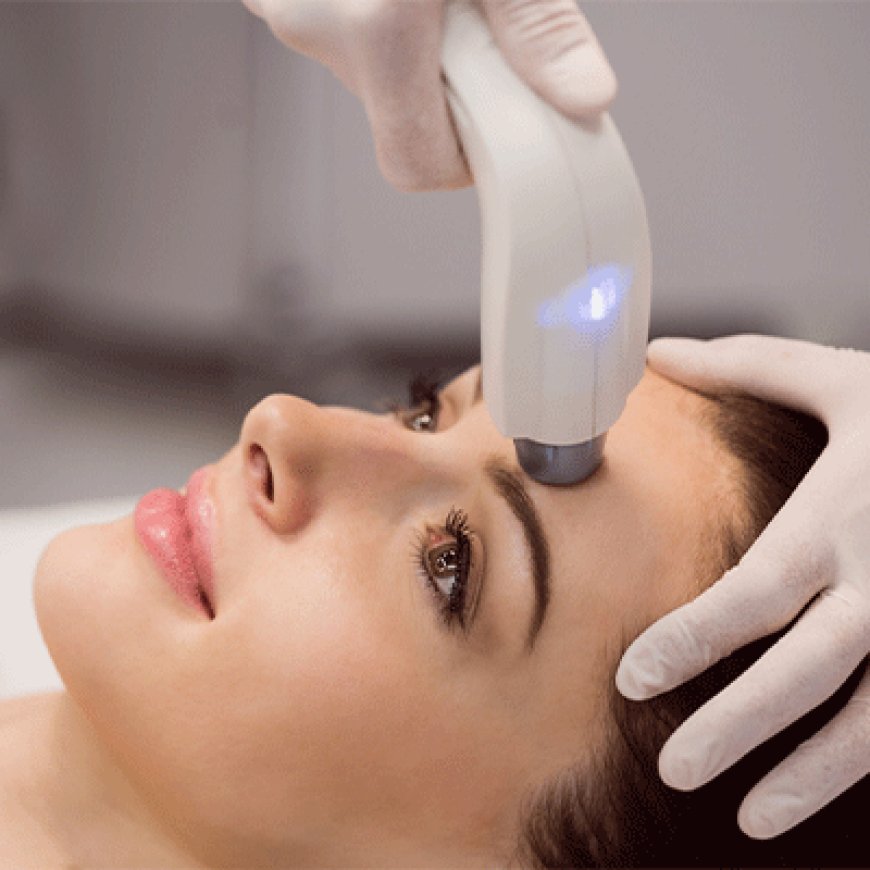Latest Innovations in HIFU Technology
HIFU treatment is a non-invasive procedure that uses ultrasound energy to tighten skin, reduce wrinkles, and lift facial contours with no downtime.

High-Intensity Focused Ultrasound (HIFU) has revolutionized the non-surgical cosmetic industry by offering an effective solution for lifting, tightening, and contouring the skin—without any incisions or recovery time. Over the years, continuous advancements in technology have enhanced the precision, comfort, and results associated with HIFU. As one of the most in-demand treatments today, HIFU Treatment in Islamabad is now more powerful and accessible than ever due to the latest innovations that are transforming the aesthetic experience for patients.
Understanding the Basics of HIFU Technology
Before diving into the innovations, it's crucial to understand what HIFU does. The treatment uses focused ultrasound energy to target the deep layers of the skin, including the superficial muscular aponeurotic system (SMAS)—the same layer addressed during a surgical facelift. The energy triggers collagen production, promoting natural tissue lifting and tightening over time. While traditional HIFU systems were effective, newer technologies have refined the process, improving treatment outcomes and patient satisfaction.
1. Multi-Depth Targeting Systems
One of the most notable innovations in HIFU devices is the introduction of multi-depth targeting. Traditional HIFU machines typically focused on one or two layers of the skin. New systems now allow simultaneous delivery of ultrasound energy to multiple depths—1.5mm, 3.0mm, and 4.5mm—within a single session. This layered approach results in more effective collagen remodeling and skin lifting.
This capability ensures the treatment reaches both superficial and deep layers, offering more comprehensive results, especially for aging skin with varying levels of laxity.
2. Real-Time Imaging Integration
The addition of real-time imaging technology to HIFU machines has significantly increased precision and safety. Advanced models, such as those using Ultrasound Visualization (Ultravisual), allow practitioners to see the layers of the skin during treatment. This feature ensures accurate targeting of the SMAS layer while avoiding sensitive structures like nerves and blood vessels.
This innovation not only increases the effectiveness of the treatment but also minimizes the risk of complications, making HIFU a safer option for more individuals.
3. High-Frequency, Low-Pain Devices
One common concern with older HIFU systems was the level of discomfort during treatment. New devices now operate at higher frequencies with improved pulse modulation, resulting in significantly reduced pain during the procedure. Innovations like Micro-Focused Ultrasound with Visualization (MFU-V) and Fractional HIFU minimize the thermal energy’s impact on surrounding tissues while maintaining the depth and intensity required for collagen stimulation.
These enhancements make the procedure more tolerable for patients, reducing the need for numbing creams or anesthesia.
4. Fractional HIFU Technology
Another important development is the use of Fractional HIFU technology. Instead of delivering a continuous ultrasound beam, fractional systems break the energy into micro zones that penetrate the skin in a more controlled and distributed manner. This method reduces overall skin trauma, allows faster healing, and increases the safety of treating delicate areas such as under the eyes and around the mouth.
Fractional HIFU has made the treatment suitable for a wider range of skin types and conditions, including thinner or more sensitive skin.
5. Customizable Cartridge Sizes
Recent HIFU systems now come with a broader selection of cartridge sizes, allowing clinicians to tailor the treatment more precisely to different parts of the face and body. Smaller cartridges are ideal for hard-to-reach or delicate areas, such as the periorbital zone or nasolabial folds, while larger cartridges are used for the neck, jawline, or cheeks.
The ability to switch cartridges quickly and efficiently means less treatment time, improved accuracy, and greater comfort for patients.
6. HIFU for Body Contouring
While initially developed for facial rejuvenation, modern HIFU technology has expanded into the realm of body contouring. Innovations now allow deeper tissue penetration—up to 13mm in some devices—targeting subcutaneous fat and tightening loose skin on the abdomen, arms, thighs, and buttocks.
This non-invasive body sculpting solution is particularly attractive for individuals looking to firm up post-weight loss or improve areas resistant to exercise. It's an exciting step forward in non-surgical aesthetics.
7. Dual-Function Devices
Some of the latest systems combine HIFU with other technologies such as Radiofrequency (RF) or Laser for synergistic results. For example, devices that integrate both HIFU and RF can offer immediate skin tightening from RF’s thermal effect, along with the long-term collagen-building benefits of ultrasound.
These combination treatments provide comprehensive rejuvenation with shorter treatment sessions and improved patient outcomes. They also allow practitioners to address multiple concerns simultaneously.
8. Mobile and Portable Devices
Technological miniaturization has led to the development of high-quality portable HIFU devices. These smaller units are ideal for at-home use or travel clinics and are becoming increasingly popular among dermatologists offering concierge services.
While professional, in-clinic devices still provide the best results, portable HIFU systems are expanding access to this treatment and making maintenance more convenient.
9. Improved Safety Protocols and AI Monitoring
AI-assisted systems are now being integrated into HIFU machines to monitor skin response, track temperature control, and alert practitioners in real time if any deviation occurs. These built-in safety features make the treatment not only more effective but also much safer, especially for less experienced users.
Additionally, improved safety protocols such as automatic energy calibration and smart pulse algorithms have drastically minimized the risk of burns, swelling, or nerve damage.
10. HIFU for Specific Skin Conditions
Modern HIFU devices are now being adapted for more targeted medical applications, such as acne scar reduction, pore tightening, and improving uneven skin tone. Fine-tuning energy levels and pulse durations enables safe treatment for patients with darker skin tones who were previously at risk of post-inflammatory hyperpigmentation.
This opens doors for more people across different ethnicities to safely benefit from HIFU without compromising skin integrity.
Conclusion
The continuous evolution of HIFU technology is making it one of the most advanced and effective tools for non-surgical skin lifting and rejuvenation. With innovations like real-time imaging, multi-depth targeting, fractional delivery, and AI integration, today’s HIFU treatments are more precise, comfortable, and inclusive than ever before.
As the technology continues to improve, patients can expect even more refined results with fewer sessions and lower risks. For those looking to experience the latest in ultrasound-based skin therapy, SKN Cosmetics clinic is a premier destination for HIFU Treatment in Islamabad, offering advanced technology and expert care for optimal aesthetic outcomes.
What's Your Reaction?
 Like
0
Like
0
 Dislike
0
Dislike
0
 Love
0
Love
0
 Funny
0
Funny
0
 Angry
0
Angry
0
 Sad
0
Sad
0
 Wow
0
Wow
0











































